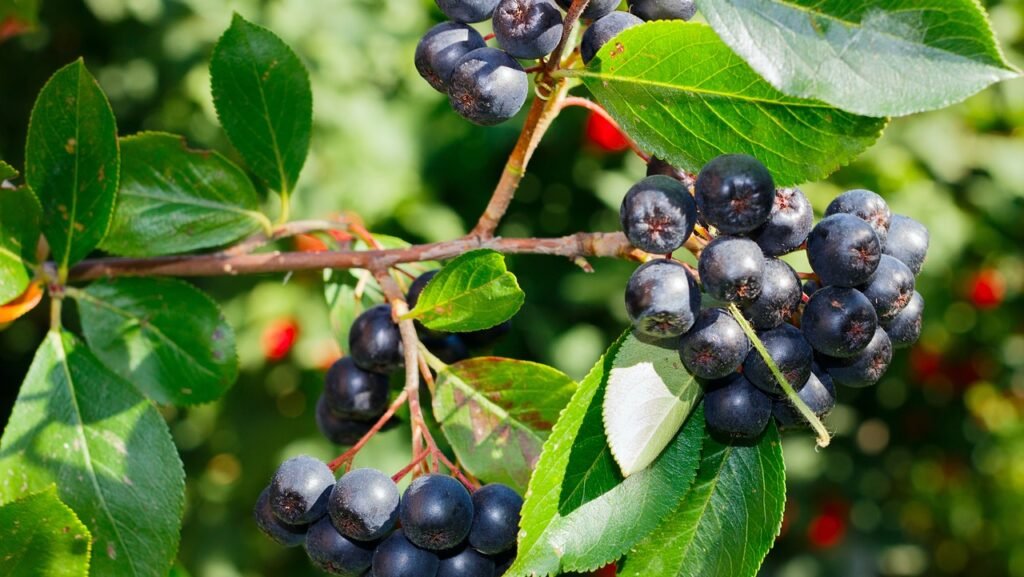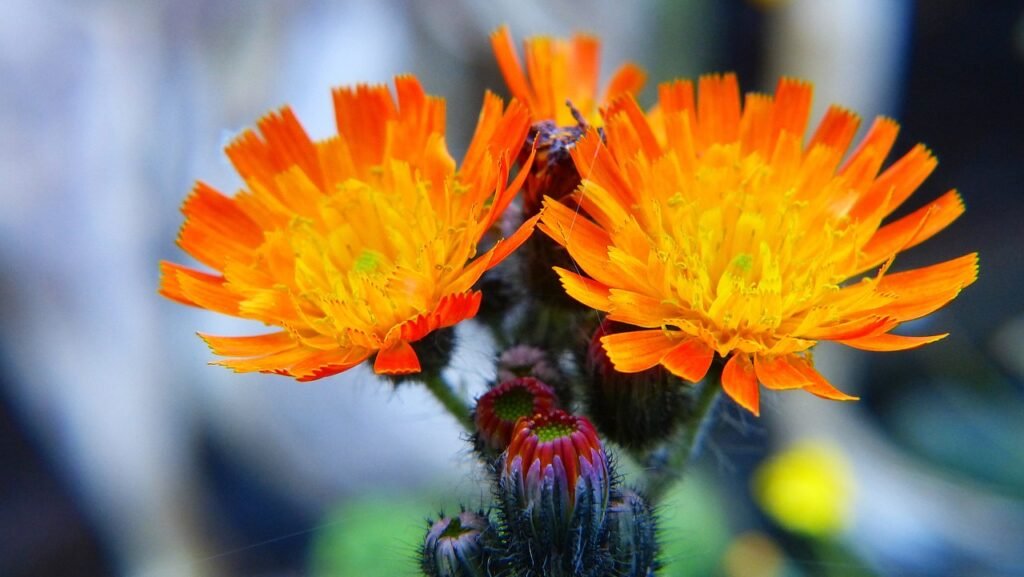
Identification of Common Buckthorn
Common Buckthorn (Rhamnus cathartica) is a deciduous shrub or small tree native to Europe and Western Asia. It has become invasive in many parts of North America, including the United States and Canada. One of the distinguishing characteristics of Common Buckthorn is its dark, glossy leaves that are oval-shaped with serrated edges. The leaves have a veined structure and are arranged opposite each other along the stems.
Another distinguishing feature of Common Buckthorn is its bark. The bark is gray or brownish in color and has prominent lenticels, which are raised pores that allow the exchange of gases. During the spring, Common Buckthorn produces inconspicuous, greenish-yellow flowers that are clustered together in groups. These flowers later give way to small, green berries that ripen to a dark purple or black color in the fall. The berries are a key identification feature and persist throughout the winter, providing a food source for birds.
Negative Impact of Common Buckthorn on Ecosystems
The invasive plant species, common buckthorn (Rhamnus cathartica), has been found to have a detrimental impact on ecosystems. Due to its ability to outcompete native vegetation, common buckthorn often forms dense thickets that can quickly take over an area. This dense growth shades out native plants, inhibiting their growth and reducing biodiversity. As a result, the overall health and functioning of the ecosystem can be compromised.
In addition to outcompeting native plants, common buckthorn also has other negative effects on ecosystems. Its berries are a favorite food source for many bird species, which then spread the seeds through their droppings. However, common buckthorn lacks the nutritional value needed to support these birds and can lead to poor health and reduced reproductive success. This disruption to the natural food chain and ecological balance can have cascading effects throughout the ecosystem. Ultimately, the presence of common buckthorn can lead to a decline in overall biodiversity and the alteration of native plant communities.
Understanding the Life Cycle of Common Buckthorn
Understanding the life cycle of common buckthorn is crucial in effectively managing and controlling its spread. Common buckthorn, scientifically known as Rhamnus cathartica, is a deciduous shrub native to Eurasia. Its life cycle begins with the germination of its seeds, which usually occurs in the spring. The seeds are dispersed by birds and other animals, making it easy for the plant to colonize new areas.
Once the seed germinates, it quickly develops into a seedling, with the help of stored nutrients from the seed. The seedling then grows into a small shrub, producing elongated leaves and sharp thorns. As the shrub matures, it starts to bear small, greenish-white flowers in clusters. The flowers are inconspicuous but highly attractive to pollinators such as bees and butterflies, aiding in the plant’s reproductive process. After successful pollination, the flowers develop into small, round berries that turn black when ripe. These berries are a vital food source for birds, which aids in seed dispersion.
Understanding the life cycle of common buckthorn provides insights into its invasive tendencies and enables landowners and conservationists to develop appropriate management strategies. By targeting specific stages of its life cycle, such as preventing seed germination or removing the shrubs before they produce berries, it is possible to control the spread of this invasive species and safeguard native ecosystems.
Methods for Manual Removal of Common Buckthorn
One effective method for manually removing common buckthorn is through cutting and pulling. This involves using sharp pruning shears or loppers to cut the buckthorn stems near the ground level. Once cut, the remaining stump can be pulled out using a prying tool or a specialized weed wrench. It is important to ensure that the entire root system of the plant is removed to prevent regrowth. Proper protective gear such as gloves, long sleeves, and eye protection should be worn during this process to avoid any potential injuries.
Another manual removal method is through the process of girdling. This technique involves cutting a ring around the buckthorn stem, approximately one inch wide, using a hand saw or a sharp knife. The ring should completely encircle the stem, reaching through the outer bark and into the inner wood. Girdling disrupts the flow of water and nutrients from the roots to the rest of the plant, effectively killing it. Over time, the girdled buckthorn will dry out and die, making it easier to remove. It is important to note that this method may require more time for the plant to completely perish, and repeated girdling may be necessary for larger plants.
Using Herbicides to Control Common Buckthorn
In the battle against common buckthorn, herbicides can be a powerful tool to control its spread. By targeting the invasive shrub directly, herbicides provide an efficient and effective means of eliminating common buckthorn from an ecosystem. The use of herbicides can be especially beneficial in areas where manual removal alone may not be feasible or practical.
It is important to note that herbicides should be used with caution and in accordance with local regulations and guidelines. When selecting an herbicide for common buckthorn control, it is crucial to choose a product that specifically targets woody plants. This will minimize the impact on desirable native species, allowing for a more targeted approach. Additionally, timing is key when using herbicides. Applying the product during the proper growth stage of common buckthorn will increase the likelihood of successful control.
Preventing the Spread of Common Buckthorn Seeds
Common Buckthorn, an invasive plant species, can spread rapidly through the dispersal of its seeds. Preventing the spread of these seeds is crucial in the management and control of Common Buckthorn infestations. One effective method is to remove and dispose of the berries produced by the plant.
Berries of Common Buckthorn are easily recognizable, with clusters of small, round fruits turning from green to black when ripe. To prevent the spread of seeds, it is essential to carefully collect and dispose of these berries. This can be done by cutting the branches and collecting the berries in a bag or bucket. It is important to ensure that the berries do not fall to the ground during the removal process, as this can contribute to the further proliferation of the plant. Proper disposal of the collected berries, such as burning or landfill disposal, is crucial to avoid unintentional dispersal and germination. By eliminating the potential source of new seeds, the spread of Common Buckthorn can be effectively suppressed.
Alternative Natural Remedies for Common Buckthorn Removal
One option for removing common buckthorn is by using a combination of physical and mechanical methods. This approach involves cutting the stems of the buckthorn close to the ground and then applying herbicides or manually removing the root system. While this method can be effective, it may require multiple treatments and can be labor-intensive, especially for larger infestations. Additionally, it is important to properly dispose of any plant materials to prevent the spread of seeds and potential regrowth of the buckthorn.
Another alternative remedy is the use of controlled burning. This method involves conducting prescribed burns to eliminate the buckthorn. Controlled burning can help remove buckthorn by destroying seeds, young seedlings, and smaller plants. However, it is important to note that controlled burning should only be carried out by trained professionals and under appropriate weather and site conditions to ensure safety and minimize the risk of wildfire.
Creating a Management Plan for Common Buckthorn Infestations
Developing an effective management plan is crucial in addressing common buckthorn infestations. The first step is to conduct a thorough assessment of the affected area to determine the extent of the invasion. This assessment should include identifying the density of buckthorn plants, their size, and the presence of any other vegetation. Additionally, it is important to assess the ecological impact of the buckthorn invasion on the surrounding ecosystem. This information will help in devising appropriate strategies for control and eradication.
Once the assessment is complete, the next step is to set clear objectives and prioritize actions based on the severity of the infestation and the resources available. This may involve determining the areas where buckthorn removal is most urgent, such as sensitive ecosystems or areas with a high risk of spread. Developing a timeline and assigning responsibilities to different individuals or teams is also essential for effective management. Regular monitoring and evaluation should be conducted to track progress and adjust strategies as needed. By creating a comprehensive management plan, landowners and environmental professionals can work together to tackle common buckthorn infestations and restore the health of affected ecosystems.
Monitoring and Maintenance of Common Buckthorn Control
Monitoring and maintenance play a crucial role in the effective control of common buckthorn infestations. Regular monitoring allows landowners and managers to assess the success of their control methods and identify any new growth or resurgence of buckthorn plants. It is important to conduct thorough inspections of the infested areas, checking for any signs of regrowth or seeds that may have been missed during control efforts. By promptly identifying and addressing these areas, the spread of buckthorn can be minimized, preventing further damage to the ecosystem.
Maintenance activities are necessary to ensure long-term control of common buckthorn. This may involve ongoing manual removal of any new shoots or seedlings that emerge, as well as continued monitoring of the area to prevent reinfestation. In some cases, the use of herbicides may be required to target larger buckthorn plants or to treat areas that are difficult to access by manual means. Regular maintenance is crucial to keep common buckthorn under control, as neglecting the necessary follow-up can result in the reestablishment of buckthorn and undo all previous control efforts.
Working with Professionals for Common Buckthorn Eradication
When faced with a significant common buckthorn infestation, it may be necessary to seek professional help for eradication. Professionals who specialize in invasive species management can offer expertise and experience in effectively dealing with common buckthorn. They are equipped with the knowledge of the best practices and strategies to employ in order to eradicate this invasive species and prevent its reestablishment.
Working with professionals for common buckthorn eradication provides several advantages. Firstly, they can conduct a thorough assessment of the infestation and develop a tailored management plan that suits the specific needs of the affected area. Their expertise allows them to identify the most effective methods for removal, which may include targeted herbicide application or mechanical removal techniques. Additionally, professionals have access to specialized equipment and tools that make the eradication process more efficient and effective. Their involvement can significantly reduce the time and effort required to control and eliminate common buckthorn infestations.


